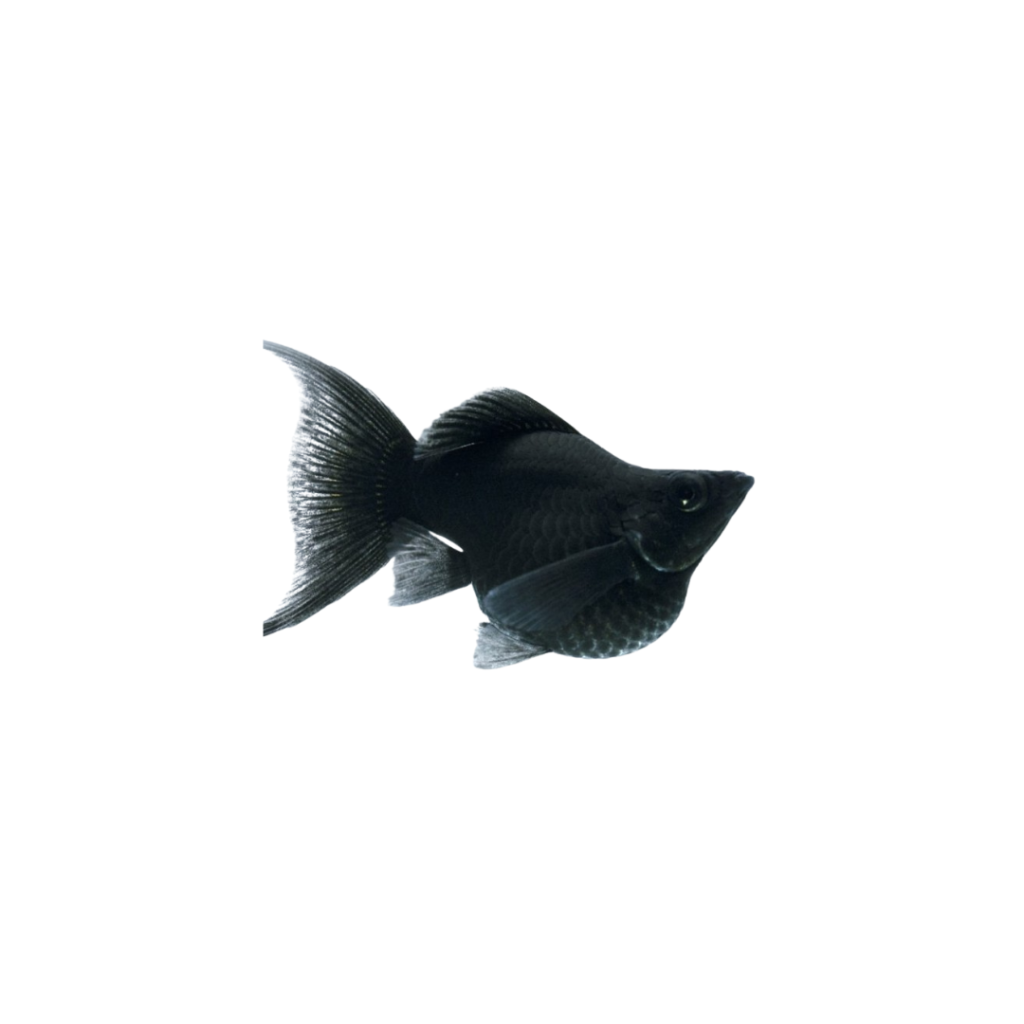Platy Coral
Xiphophorus maculatus

Description
The Platy Coral is a vibrant and attractive variety of the common platy (Xiphophorus maculatus), known for its beautiful, striking coral-like coloration. The body of the Platy Coral is typically a bright orange to coral-red color, with some individuals having subtle variations in shades of pink or peach. They may also have darker markings or spots on the body or fins, adding to the visual appeal. The color can vary slightly depending on water conditions, diet, and genetics, but the coral-like hue remains the most defining characteristic of this variety.
Habitat Origin
Native to freshwater rivers, lakes, and ponds of Central America, particularly Mexico, Honduras, and Guatemala. They can be found in slow-moving waters with plants, rocks, and other submerged structures. While wild Xiphophorus species prefer warm, clear waters, Platy Corals have been selectively bred for aquarium life, making them adaptable to a variety of tank setups.
Aquarium
Ideal Number in Aquarium: Best kept in groups of at least 3-5 to display their natural social behavior.
Favorite Food

Platy Corals are omnivores and will accept a variety of foods. They can be fed flake food, micro pellets, and live or frozen foods such as brine shrimp, daphnia, bloodworms, and grindal worms. They also enjoy plant-based foods like spirulina, blanched zucchini, and lettuce. A balanced diet will help maintain their health and vibrant coloration.
Behavior:
Platy Corals are peaceful, social, and active fish that thrive in groups. They are non-aggressive and often seen swimming in the middle or upper regions of the tank. While they are not territorial, males may occasionally show some chasing behavior toward females, particularly during breeding. They are livebearers and can breed readily in community tanks if both males and females are kept together.
Special Care:
Platy Corals are easy to care for and adaptable to various water conditions. Regular water changes, good filtration, and a well-maintained tank are necessary to keep them healthy. While they can tolerate a variety of water types, they thrive in slightly alkaline water with medium to hard hardness.
Compatibility with Other Fish: Platy Corals are compatible with a wide variety of peaceful fish species. They can be kept with other livebearers like guppies, mollies, and swordtails, as well as tetras, rasboras, gouramis, and Corydoras catfish. It is best to avoid keeping them with large or aggressive fish, such as bettas, cichlids, or goldfish, as these may bully or eat the platies.
Breeding Tank Setup
Although not strictly required, a separate breeding tank is recommended for Platy Coral to improve fry survival and maintain optimal water conditions. A 40-liter (10-gallon) tank is suitable, offering enough space for breeding activity and fry development. Ideal water parameters include a pH of 7.0–8.0, temperature of 24–28°C, and water hardness between 6–12 dGH. Use a gentle sponge or low-flow internal filter to maintain water quality without creating strong currents. A sand or fine gravel substrate, along with live plants like Java moss and floating species, provides cover and grazing surfaces for the fry.
Conditioning for Breeding
To prepare Platy Coral for spawning, offer a nutritious and varied diet. High-protein foods such as live or frozen brine shrimp, bloodworms, and daphnia are effective in stimulating breeding readiness. Supplement with quality flakes or pellets specifically designed for livebearers. Perform weekly water changes of 20–30% to keep the tank clean and stable. Raising the water temperature slightly to around 28°C can mimic seasonal cues and promote mating behavior.
Spawning Process
Platy Coral are livebearers, meaning the female gives birth to fully formed fry rather than laying eggs. Spawning typically occurs when the fish are well-conditioned and water parameters are stable. Males will chase and display vibrant colors to attract females. Fertilization is internal, and the female carries the fry for about 4–6 weeks before giving birth to 20–100 live young. While it’s not necessary to remove the breeders, some aquarists separate the female after giving birth to prevent predation on the fry.
Fry Care
Fry are born fully developed and begin swimming and feeding immediately. Initial feeding should include infusoria, liquid fry food, or finely crushed flakes. After about a week, introduce baby brine shrimp or crushed pellets to support healthy growth. Maintain clean water through 10–15% water changes every 2–3 days. A sponge filter provides effective filtration without harming the delicate fry. Ensure stable temperature and provide hiding places with live plants to reduce stress and increase fry survival.
Maturity, Sexing & Stress Prevention
Platy Coral reach sexual maturity at around 4–6 months. Males are typically smaller and more colorful, equipped with a gonopodium—an elongated anal fin used for fertilization. Females are larger, rounder, especially when gravid, and usually less colorful. To prevent stress, avoid overcrowding and maintain consistent water parameters. Remove aggressive or fast-moving tankmates to keep the environment calm and conducive for breeding and fry growth.
